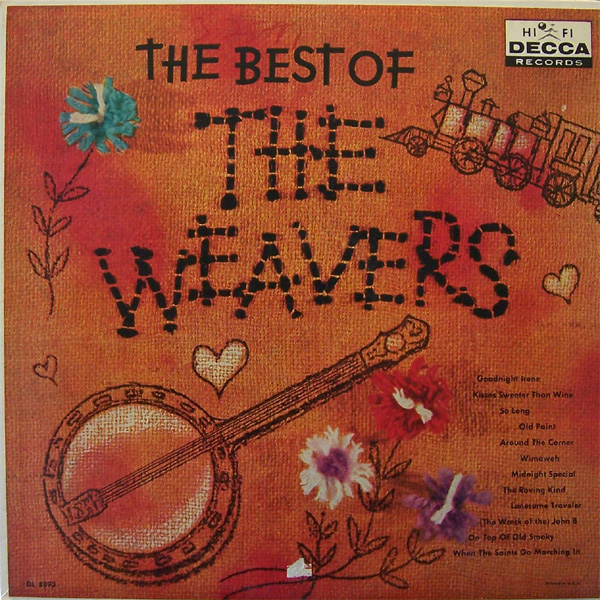
In December 1955, the group reunited to play a sold-out concert at Carnegie Hall. After this, Pete Seeger continued his solo career, although as with all of them, he continued to suffer from the effects of blacklisting. As a result, the group's economic viability diminished rapidly and in 1952 it disbanded. Right-wing and anti-Communist groups protested at their performances and harassed promoters. Their recordings were denied airplay, which curtailed their income from royalties. Seeger was found guilty of contempt and placed under restrictions by the court pending appeal, but in 1961 his conviction was overturned on technical grounds.īecause Seeger was among those listed in the entertainment industry blacklist publication, Red Channels, all of the Weavers were placed under FBI surveillance and not allowed to perform on television or radio during the McCarthy era.ĭecca Records terminated their recording contract and deleted their records from its catalog in 1953. Seeger refused to answer, however, claiming First Amendment grounds, the first to do so after the conviction of the Hollywood Ten in 1950. The Weavers encouraged sing-alongs in their concerts, and sometimes Seeger would shout out the lyrics in advance of each line in lining out style.ĭuring the Red Scare, Pete Seeger and Lee Hays were identified as Communist Party members by FBI informant Harvey Matusow (who later recanted) and ended up being called up to testify to the House Committee on Un-American Activities in 1955. The successful concerts and hit recordings of the Weavers helped introduce to new audiences such folk revival standards as "On Top of Old Smoky" (with guest vocalist Terry Gilkyson), "Follow the Drinking Gourd", "Kisses Sweeter than Wine", "The Wreck of the John B" (aka "Sloop John B"), "Rock Island Line", "The Midnight Special", "Pay Me My Money Down", "Darling Corey" and "Wimoweh". In keeping with the audience expectations of the time, these and other early Weavers' releases had violins and orchestration added behind the group's own string-band instruments. The recording stayed at number one on the charts for a lengthy 13 weeks.


The group had a big hit in 1950 with Lead Belly's "Goodnight, Irene", backed with the 1941 song "Tzena, Tzena, Tzena", which in turn became a best seller. In 19, Hays and Seeger had co-founded a previous group, the Almanac Singers, which had promoted peace and isolationism during the Second World War, working with the American Peace Mobilization.Īt Hellerman's suggestion, the Weavers took its name from a play by Gerhart Hauptmann, Die Weber (The Weavers 1892), a powerful work depicting the uprising of the Silesian weavers in 1844 which contains the lines, "I'll stand it no more, come what may". The Weavers were a progressive folk singing group formed in November 1948 by Ronnie Gilbert, Lee Hays, Fred Hellerman, and Pete Seeger. The Weavers are shown in a postcard circa 1949.


 0 kommentar(er)
0 kommentar(er)
